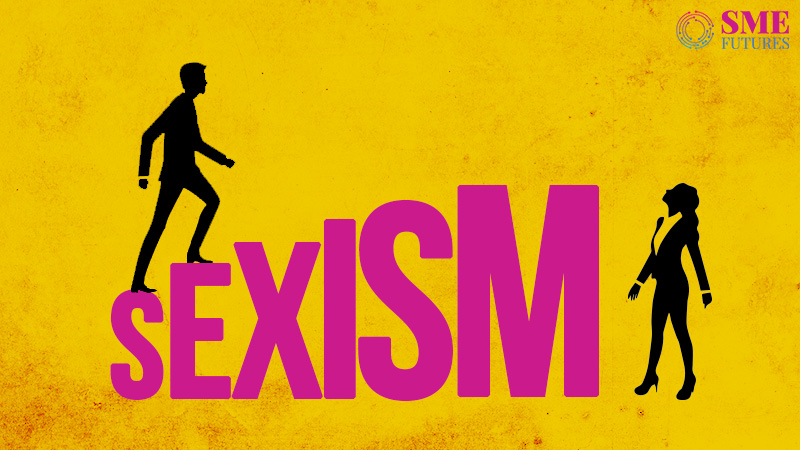The women workforce in India contributes a mere 18% in India’s GDP- finds a survey report by McKinsey. It also underlines the fact that only 25% of women account for the total labour force in India. Unfortunately, their GDP contribution is far below the average of 37%, contributed by women globally.
Despite all endeavours made by the Government, Non-Profit entities and Corporate sectors, these stats make us want to take a pause and question –
Have we been able to make a significant impact on equal representation of women in the workplace?
Each year we read a plethora of Women’s day stories about their increasing participation in almost all economic verticals and entry in boardrooms of many companies. Upholding the cause, in a historic move, the Rajya Sabha had also passed the Women’s Reservation Bill, under which 33% of seats in India’s Parliament and state legislative bodies are reserved for women.
Given this attitudinal change, organisations are taking gender equality into serious considerations while evaluating work culture.
However, this change in perception is only scratching the surface of a deep-rooted issue. To give you a better perspective; the needs and challenges encountered by men and women are different. Sensitising people on gender equality can only influence how we treat everyone. But, to create equal opportunities for all genders, we must focus on gender equity, i.e., categorically dealing with gender-specific needs, giving a level playing field for all. The approach towards this end needs to be more proactive than merely floating the idea and waiting for society to evolve.
As Lise Kingo, CEO, UN Global Compact rightly puts it and quoting her, “Gender equality is not an evolutionary process; we have to spark a gender equality revolution”.
Underpinning this outlook of Lise is the knowledge that not all women start on an equal footing. The inequality and discrimination does not begin and end with disparities in opportunities and breaking the glass ceiling. It is further worsened by and overlaps with various other forms of social nuances that make women vulnerable. This is especially true in the case of women in regional, rural and remote communities.
While these societal biases are evident; we find it easier to ignore discrimination. That’s because such behaviour has prevailed in our societies for so long, that it is now considered NORMAL!
What behaviour are we talking about?
Gender segregation of family and household responsibilities!
Gender norms and related practices in our society often impose a bulk of house and family responsibilities on women. This attitude compels women to choose between family and work. These cultural biases and domestic duties often don’t consider the unpaid job done and the time spent by women, to seamlessly run a household. This vital contribution to the welfare of a family and eventually the society goes unaccounted for in the traditional measures of GDP.
As we move out of these remote areas and get into the cities, the situation is not very different. As per a worldwide survey conducted by Accenture, 22% of women are less likely to reach managerial positions as compared to men, and the cause can be attributed to gender segregation biases. Adding to the plight, these biases didn’t remain restricted to societal diktats; it contaminated workplaces through industrial and occupational gender segregations.
Corroborating the statement a report by World Economic Forum based on LinkedIn research says – women are under-represented in manufacturing, construction, engineering, communications technology, etc., leading to loss of gender diversity benefits.
Given these circumstances, the priority is to tailor targeted solutions, depending on places and situation, thereby bringing in a revolution in gender equality. Such customised measures would not only encourage more women to join the labour force but also enable them to take on more demanding roles and spend equal amounts of time on paid work as their male counterparts.
Now the question is – Why is it so crucial for women to spend equal amounts of time on paid work as men?
The answer to that lies in the economy of our country and the global GDP.
Gender Inequality has gone beyond being a moral or social issue. It has now transpired into a critical economic challenge. Yes! You read that, right!
Women make for half of the world’s working population, and if they are kept from achieving their full economic potential, the global economy suffers. Substantiating our stance is a study conducted by McKinsey Global Institute. The report highlights the power of parity and says advancing women’s equality can add as much as $12 Trillion to the global GDP 2025. The report further stated that, if women were to participate in the economy identically to men, the global GDP could increase by $28 Trillion by 2025.
Treading on this line of thought, the United Nations’ Sustainable Development Goal 5 is centered on women emerging as a critical differentiator of the development paradigm. Expressing deep commitment towards SDG 5, NITI Aayog has been mandated as the nodal agency, by the Indian Government, responsible for the implementation and monitoring outcomes for projects that relate to various Sustainable Development Goals.
Gender equality is no more only a fundamental human right; it is a necessary foundation for a peaceful, prosperous and sustainable world.











